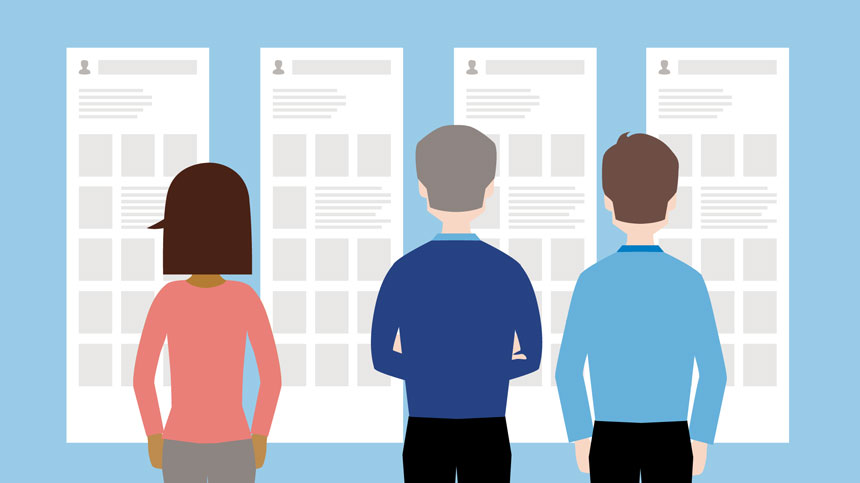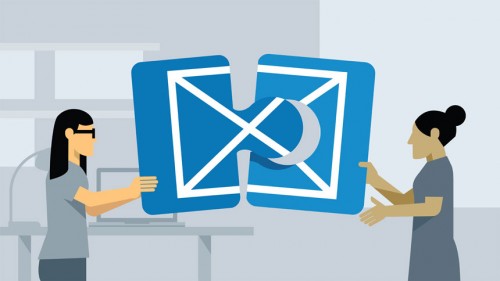How to deal with bad design suggestions
Gracefully respond to unsolicited design ideas, and prevent them from derailing good design
An executive sketches a new homepage on a napkin to mimic a site she used and liked. A developer stays late one night and adds a new feature he thinks would be cool. Or a product manager insists on adopting the same design pattern that a competitor uses.
If these scenarios sound familiar, you’re not alone. Most designers receive this kind of “help” at least occasionally.
Your first instinct may be to respond with a flat and final "no." But whether a UX suggestion comes from a key stakeholder or someone on the periphery to the project, it should be thoughtfully dealt with. Before you react, consider the following steps:
1. Lose the Ego

The first step is to take your own ego out of the equation; you may have the most design experience, but you don’t have a monopoly on good ideas. Don’t assume an idea is bad just because it’s presented in a PowerPoint file instead of a Photoshop mockup. Diversity of perspectives leads to more effective ideation: even if those making the suggestions have little design knowledge, they may have a different kind of expertise or experience which you lack, and may bring a valuable perspective to the problem you are trying to solve. Acting like the czar of the design stifles others’ creativity, which ultimately leads to poorer outcomes.
2. Hear Them Out
Ruthlessly quashing ideas without even considering them will deter people from contributing other (valuable) ideas in the future. Even if an idea seems obviously wrong to you, remember that this person is also trying to make the design better, although she might have a different vision of what “better” means. Ensure that all feel heard by allowing them to:
- Explain the idea
- Explain the reasoning
- Show you sketches or examples
3. Separate the Suggestion from the Problem

You may find that, while the solution being proposed isn’t a good fit, the problem addressed is important. Ask the person what he is trying to achieve with his design idea. Is he thinking of a different user group or business need? Keep asking “what?” and “why?” (maybe in different ways) until you understand what that problem is.
4. Assess the Potential
Identify both the problems and the benefits of the suggestion. Even a bad idea has some benefit — for example, using a hamburger menu for the large-screen version of a website impairs users’ ability to navigate easily. That’s a very important reason not to use it. However, a hamburger on desktop also presents a visually appealing, uncluttered header. Acknowledge both the costs and benefits to more accurately assess the trade-offs, and decide which goals can be sacrificed or accomplished through a different method.
Consider holding a collaborative sketching session, watching user-research videos together, or holding another type of UX workshop so the proponent of the idea can remain a champion for the cause.
5. Buy Some Time for Research and Exploration

Explain that making a design decision in the moment means skipping ideation, research, and user feedback. Ideally, move toward a design-thinking process to derive the right solution for the problem addressed by the suggestion.
Depending on how much you know about your target users and their tasks, identifying the pros and cons of an idea might require:
- Reviewing previous research and seeing if the idea has already been tested and what the results where
- Searching usability guidelines and best practices for examples of similar ideas
- Building and testing a prototype of the idea, either in a usability test or an A/B test
Costs of accepting the idea should include both UX problems due to potential user confusion and logistical issues such as disruptions in the development schedule that could delay the release of other more important features. To evaluate a large group of ideas, use a structured prioritization system to understand the relative value of different options.
6. How to Say “No”
If your assessment determines the idea should not be implemented, you can say no in a positive way.
Acknowledge the Contribution
You don’t have to start handing out participation trophies, but don’t make people feel stupid for trying. Find something that you sincerely believe is true or valid about their suggestion and call it out. This could be something like:
- “This design could be meaningful for [persona type] users because they need [this functionality].”
- “It sounds like you want to address [a particular customer complaint] related to an important user task.”
Since these phrases will be followed by a “but”, make sure you are genuine in the points you make. Otherwise, it’s not worth it to say them at all.
Share the Reasoning for Your Assessment
The moment people are engaged enough to make a suggestion is the ideal time to help them learn more about UX and spread more UX knowledge throughout your team. Take advantage of these teachable moments by communicating the reasoning for your assessment, rather than just telling them a flat-out “no.”
- “This design could be meaningful for [persona type] users because they need [this functionality]. But our primary persona would probably have issues with this because [reasons].”
- “It sounds like you want to address [a particular customer complaint] related to an important user task. Prioritizing the information could be helpful, but making it larger and a different color might cause banner blindness. I’d like to do some investigation over the next day, and come up with a few sketches for alternative solutions.”
Consider providing a sketch, example, design principle, pattern, or research finding to help them understand why a design might cause issues and why a different design would work better. Treat each interaction as an opportunity to educate contributors about design — which is an investment in the future.
7. Speaking Truth to Power

When clients or powerful colleagues make a specific request (or demand), it can be difficult to say “no” even if you do provide an explanation. But that doesn’t mean you should give up and go along with harmful suggestions. Instead, talk with them about ways to incorporate the motivations and energy behind the idea, without necessarily directly implementing it.
Suggest a working meeting at which you can present options that achieve the same benefits while avoiding the costs. For example, you can say:
- “I see what you are looking for. Let me take it and compare against some UX research and patterns, and see how we can offer the best possible solution to meet your goals within our constraints.”
- “I’d like to look at how some of our competitors do this, and ensure we do it better, or at least as well.”
- “Let’s sketch something along these lines, as well as a few related alternatives and get some user feedback so we can achieve your goal.”
8. Prevent These Issues by Seeking Early Design Input
Even better than gracefully deflecting bad ideas is guiding collaboration into more productive channels. You can make the most of everyone’s contributions by seeking input at structured, strategic times, such as scheduled workshops. This proactive approach lessens the likelihood of being surprised by unexpected change requests when it’s too late to effectively assess or incorporate them.
Conclusion
Everyone has an opinion about design, which makes a UX designer's job challenging. Now add in a potpourri of other confusing elements such as politics, control over the product and schedule, a development process that may or may not include UX iterations, and people who enjoy design (even fancy themselves as designers) but who lack any real UX design expertise.
But this diversity of “design help” will be a valuable asset if you communicate with your collaborators in order to educate them and channel their strengths. The most effective UX designers include many people in their design process. They discuss business goals, development opportunities and constraints, priorities, requirements, and design ideas with a wide variety of team members and key stakeholders. These people are from many functional groups; with varying levels of UX expertise, commitment, and maturity. Developing the communication skills necessary to take advantage of these many sources of information and input is essential to becoming a great UX designer and producing just as great designs.
Thanks to Nielsen Norman Group